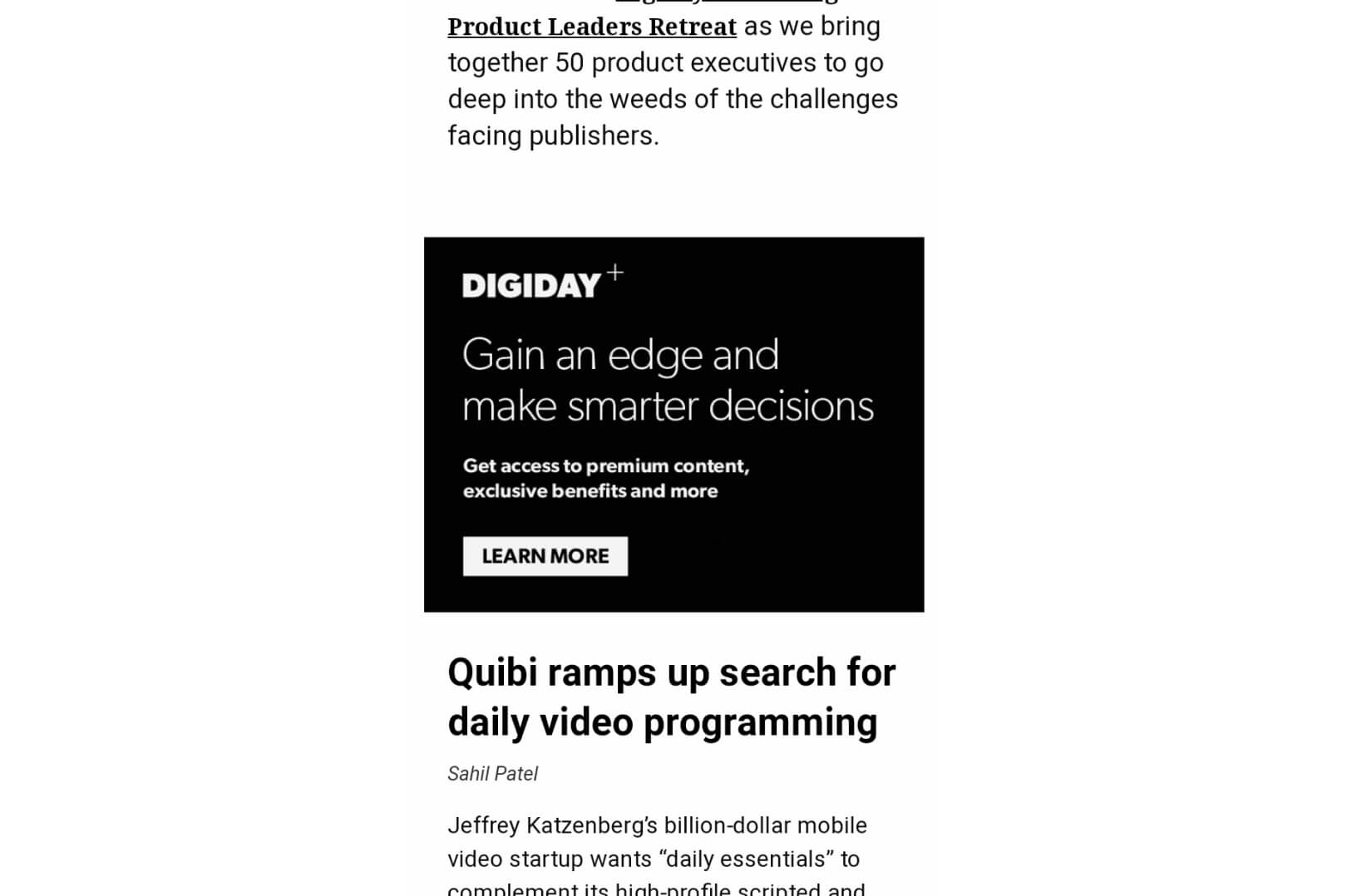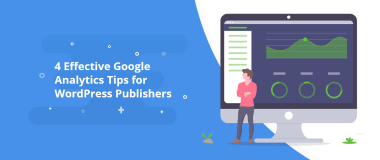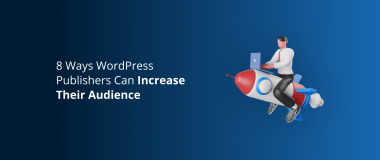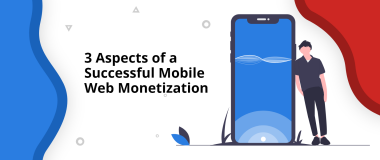When most people think of a digital publishing website, they usually think of a layout filled with DoubleClick and AdSense advertisements that has the sole purpose of tricking users to click. Of course, the digital publishing business is all about providing timely value and integrating the ads into the content for improving the bottom line.
However, things are not as simple as they seem, because some WordPress publishers put a bad name on monetization practices with their overly intrusive advertising strategy and slow loading sites. What they don’t realize is that the key aspect has always been UX. It’s all about the users’ interaction with the site, scrolling through its content and their estimation of whether an ad is unwelcomed in the layout or not.
In other words, there’s more to it than just hosting as many ads as possible and hoping for better revenue. To some of the more successful WordPress publishers out there, the monetization itself also implies streamlining an enjoyable article experience that can also be scaled for millions of monthly visitors. For this reason, without further ado, let’s talk about the four unobtrusive monetization tips that you can use to enhance the UX of your WordPress publishing website and increase its business success in the process.
Recommended: 7 Pivotal Digital Publishing Trends to Follow in 2022
1. Don’t Suffocate the User Experience
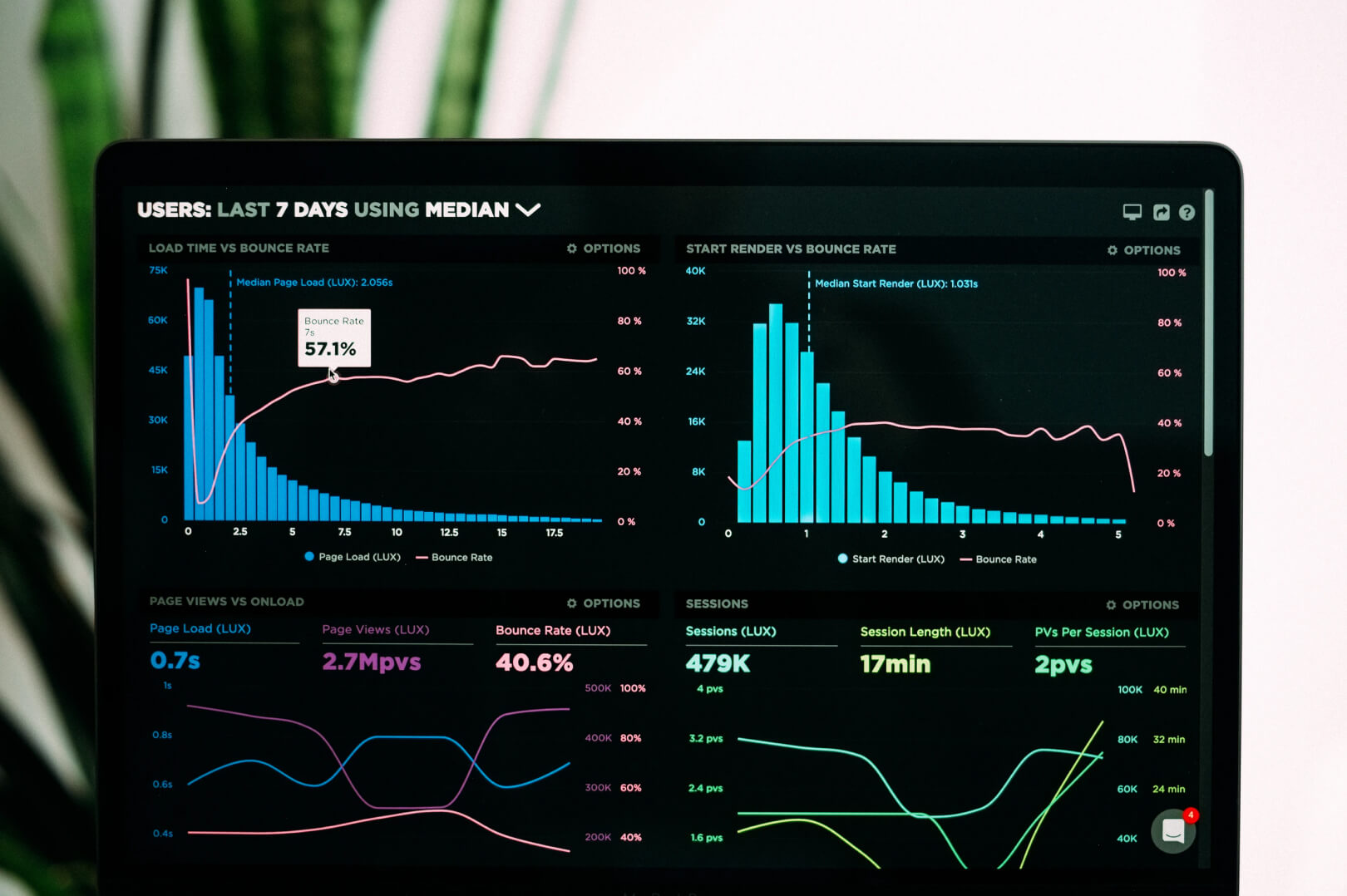
Publishers are investing enormous time and budgets in content creation , but most frequently, they also choose to feature lots of ads on their pages that the users feel overwhelmed with. Because of that, the users can’t navigate the part of the website that they’re genuinely interested in.
Multiply this with the threat of malicious ad malware that attacks the readers by injecting spyware and viruses. Also, it’s easy to see why too many obtrusive and content-blocking advertisements may damage your WordPress website monetization efforts and your reputation with the consumers.
When users can’t reach your content because of ad placement, you’re in big trouble! Lots of the readers won’t even bother to load your page again and simply find something else to do, such as read an article from your competitors.
As it turns out, 94% of first impressions of a website are related to its design. Therefore, you don’t want to have visitors abandon a page after struggling with bad ad placement. Even if the ads are perfectly-formatted and you’re getting great rates, it’s really difficult to see the benefits when you lose almost three-quarters of your readers.
Furthermore, interstitial app-install ads are no longer considered mobile-friendly, which only points out that those types of monetizations will hurt your SEO, audience engagement, and revenue at the same time.
At a time when user experience is vital for success, users can hardly open a news article without scrolling past and escaping multiple advertisements.s a digital publisher with a WordPress CMS, you can’t ignore the annoyance of the users whenever they encounter a layout that puts the ads upfront and the content second.
You need to remember that content still remains king, and while as a WordPress publisher you depend on advertisements to monetize your website, the demand for quality and easily-accessible content is paramount in the industry. If you want to endure and scale as a digital publisher, you need to know how to adjust your site to the modern consumer that is intelligent, demanding, and is not afraid to use an ad blocker to fight off greedy media companies.
2. Measure the Engagement and Optimize Accordingly
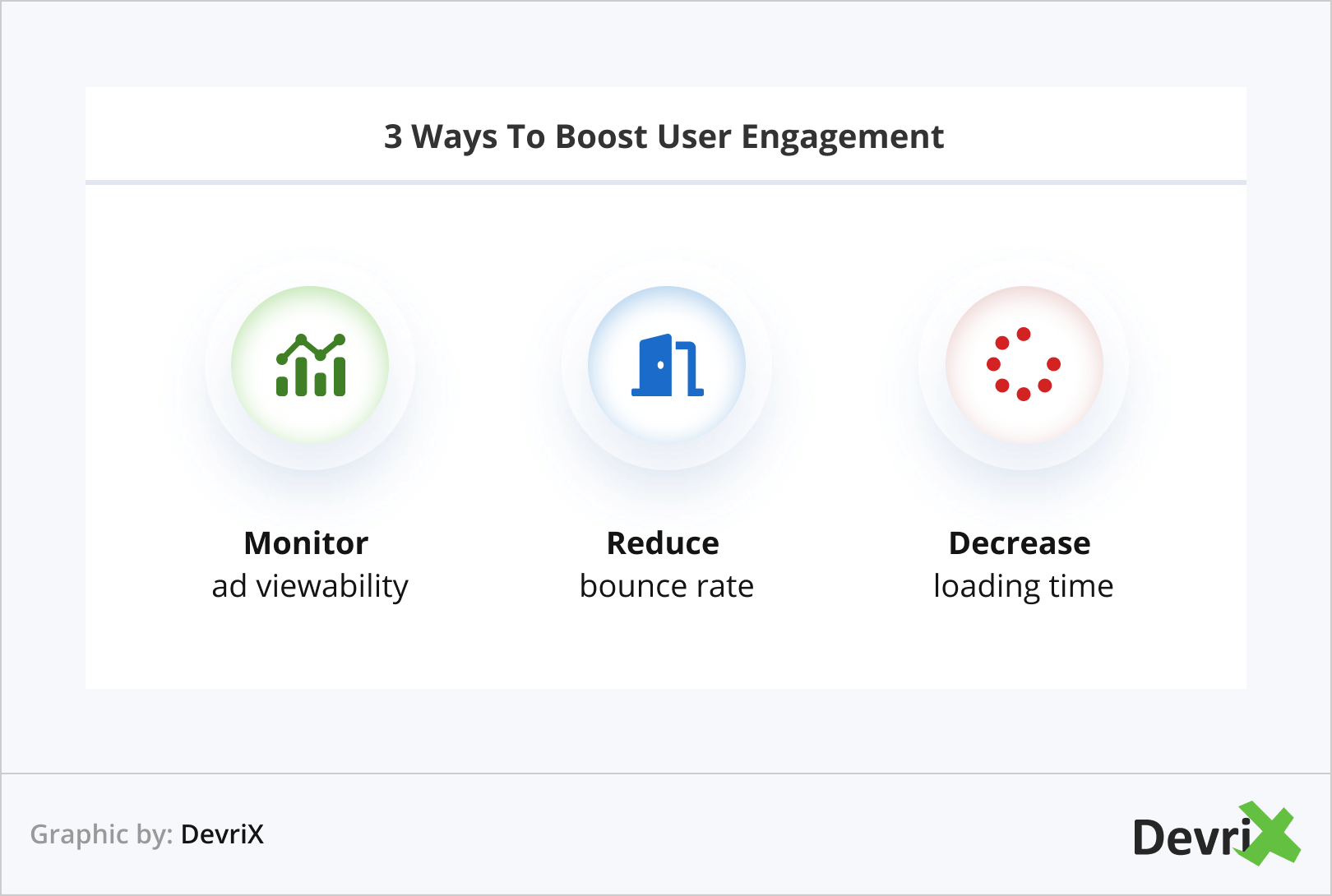
The advertisement’s revenue is not the only factor in determining its utility to the site. If one ad has a 10% CPM increase over another ad unit that results in a 20% traffic decrease, it actually damages your monetization more than it’s beneficial to your publishing business.
For that reason, it’s vital to measure and test the effectiveness of each ad unit and how it affects the engagement of your entire site. This, in turn, helps you gauge how much the readers enjoy spending time and reading the content on your site. Measuring and analyzing the following metrics should help you develop a more engaging ad-viewing experience on your pages:
Ad Viewability and Engagement
In digital advertising, viewability is crucial. For instance, even 100% of video ads‘ viewability can’t ensure that you’ve reached the right audience. The placement of video ads itself is an unobtrusive way to monetize your WordPress blog nevertheless, you need to make sure that you’ll measure completion rates and engagement levels as well.

Bounce Rates
This is another significant metric that can demonstrate your viewer engagement and campaign effectiveness in terms of advertisements on your publishing site. There are lots of factors that can suddenly grow your bounce rate. Learning what makes a visitor land on your article and immediately leave is an important insight that can help you optimize the pages for better engagement in the future.
A misplaced ad unit with an unrelated context can definitely cause bounce rates to go up. This is why as a publisher, you need to stay focused on structuring your site for specific content-related advertisements. You should also invest heavily in your CMS and technology, and place the ad units according to the content. Additionally, make sure that the performance and speed of your site are on point.
Loading Time
Speaking of speed, as a digital publisher, you must be aware that you need to provide a positive user experience at all times. Your page and ads loading time is the key factor that influences the UX and the web page performance of your digital magazine.
Page loading time determines whether a user stays on your site or waits around a couple of seconds and leaves. Provided the short attention span of consumers in the digital media era, even a couple of extra seconds of loading time can make the difference between an engagement or bouncing off a site.
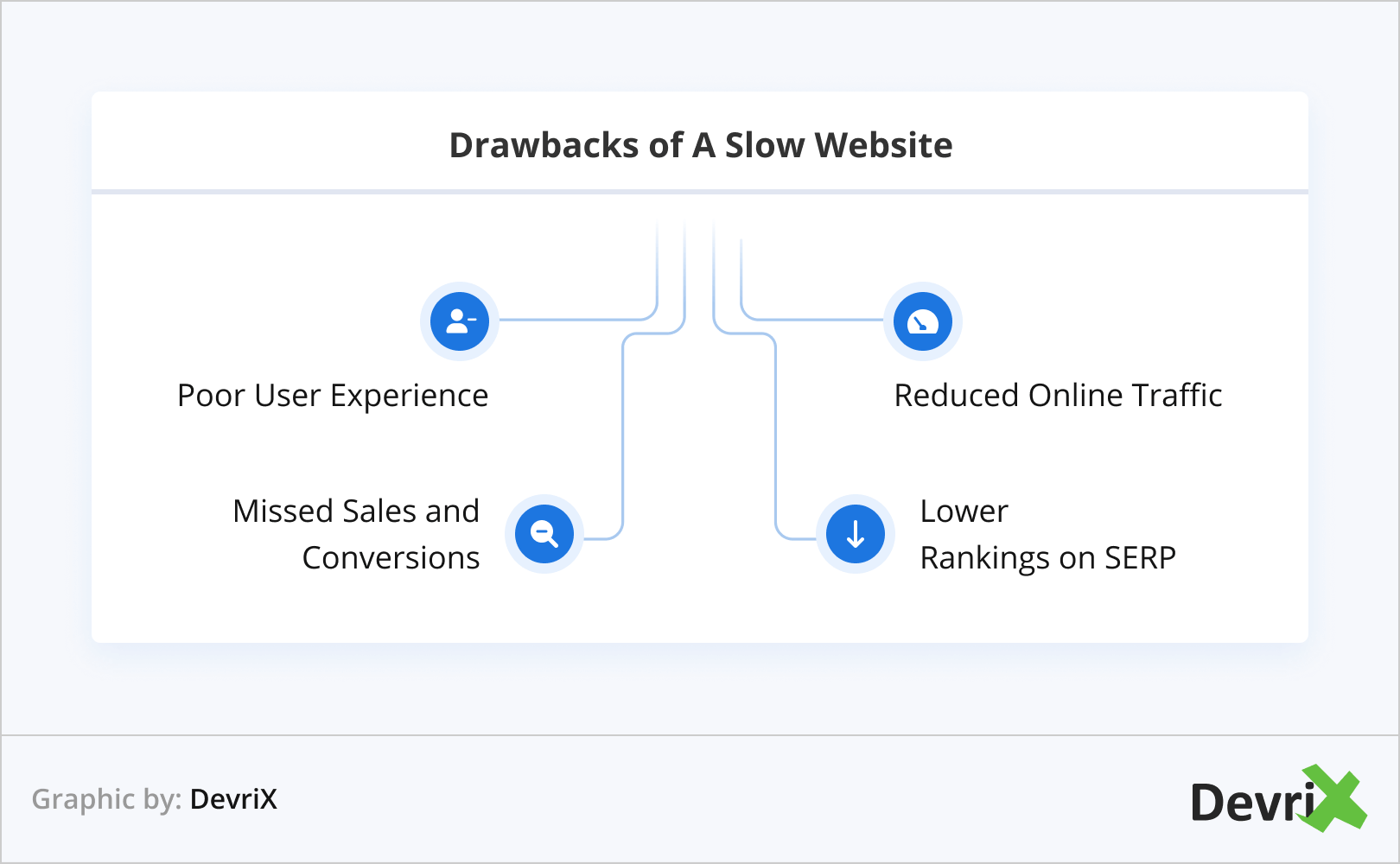
3. Optimize the Experience for Mobile Users

With the growing number of visitors that open publishers more via their smartphones than on laptops or desktop computers, it’s evident that you need to develop a monetization strategy that addresses the different needs of mobile users.
If lots of your mobile users come from social media sites and other forms of referral, because they don’t look for your content directly, it’s likely that their attention span will be much shorter than desktop users that frequently enter your name in the search bar. As a result, it’s a nice idea to add a “Read more” or “Learn More” buttons early on your article and maximize the value of referral visits on your media publishing site.
You can also utilize mid-article native placements which provide the users with an opportunity to click on sponsored content at the point when they’re about to leave your page and do something else. An additional thing that you need to pay attention to when it comes to mobile media publishing UX is the speed of the reading experience.
There are lots of mobile internet connections that work significantly slower compared to those on desktop, which means that if you want the mobile users to stay on your article and notice the ad units, you need to take action and decrease the loading speed of the mobile reading experience.
Besides removing unnecessary images and graphics from your pages, you need to work with your web development agency partners to ensure that there is no third-party script that can slow down your site and that everything works correctly on your CMS.
Also, pay close attention to interstitial ads that pop up when mobile users first land on your page. If they’ve come from Facebook and they have to wait more than 3 seconds to see the content, they’ll probably go back to their feed and look for something else. Overall, keep things moving fast on mobile, and you’ll ensure your WordPress site monetization efforts will pay off.
4. Personalize Your Monetization Approaches

A one-sized and unified strategy is not enough for content success in digital publishing, and the same goes for monetization as well. An excellent way to personalize the entire monetization experience is to provide various experiences to users based on the way they’ve arrived on your pages.
When a reader enters your homepage directly, this can indicate that the person is an avid and loyal reader of your content and does that whenever he/she has the chance. This is why it’s vital to serve the pages that are not overly cluttered with ads that would ruin their reading experience.
While you may not earn a ton of money from advertisement with these users, in the beginning, uncluttering their experience will pay off in the long run because they’ll return to your site over and over again.
The users that land on your digital magazine via social media are more likely to skim your content because initially, they don’t have the same interest in it as your most loyal readers do. To have a benefit from their short visits to your site, you need to know how to use notable ad units and content recommendations.
A personalized advertising strategy will also enable you as a WordPress publisher to place ads in front of users based on their interests and demographics (e.g., “kitchen enthusiasts”), as well as monetize your digital magazine more efficiently, increasing the value for advertisers, and providing a better experience for your readers.
Recommended: 12 Big-Name Publishers with WordPress-Powered Websites
5. Write Sponsored Articles
Another way to monetize your WordPress blog is with sponsored articles. If you’re an established writer, you may be able to monetize your WordPress site by securing sponsorships from brands.
Brands will pay you to mention or review their products in your posts, and this can be a great way to earn more money than from affiliate marketing or display ads. If you regularly publish reviews, you can connect with brands you already cover and see if they’re interested in sponsoring your content.
However, keep in mind that writing entire posts devoted to a product will take more effort on your part. However, if you’re successful, the potential earnings can be significant.
Establishing a reader base is essential if you want to monetize your content on WordPress through sponsored posts. Companies are much more likely to agree to a sponsorship deal if they know that it will aim at their target audience.
The best way to reach out to brands is through social media. Make sure to include links to your blog or website in your profile, and post regular updates that showcase your writing style and topics of interest.
You can also search for brands that are already sponsoring similar content creators and pitch them directly. If you have a large and engaged readership, companies will be eager to work with you.
Sponsored posts are a great way to monetize your content as a WordPress publisher and reach a wider audience, but you need to put in the work to attract brands.
By building a strong social media presence and pitching directly to companies, you can land some lucrative sponsorship deals.
Wrapping Up
Bottom line, the user experience will encompass each aspect of your media publishing business, including the pages, articles, and monetization strategies that you’re trying to deploy on your site. Remember to take into consideration each of the tips above and ensure an enjoyable digital publishing experience while improving your bottom line at the same time.
Let us know if you need additional help with your digital publishing business! At DevriX, we aim to to scale from thousands to hundreds of millions monthly page views, maximizing their revenue and cutting down on recurring costs in the process.
Our WordPress Core expertise is combined with our Managed Hosting Pagely partnership, our Inbound Marketing partnership with HubSpot and AdOps services for bigger traffic generation, improved UX, and immense return on your investment.

